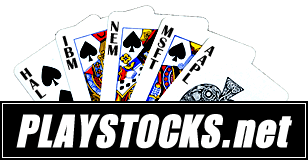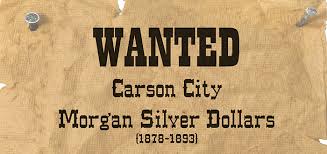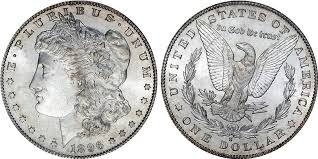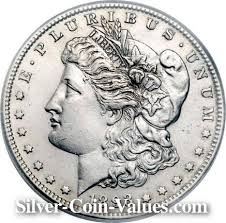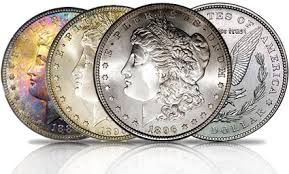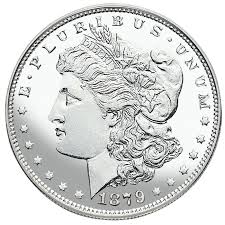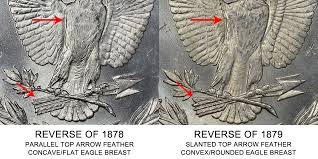Coin Collecting an interesting hobby and a financial rewarding one.
I got interested in collecting coins in Grade school where I met a new friend that collected coins. Soon after I found out some older cousins of mine had quite large coin collections. It really caught my interest - it was just Canadian Coins at first and since I was so young we were talking nickles and pennies, maybe some dimes. It was the late 1960s and I was fascinated that a 1936 penny could be worth several thousand dollars.
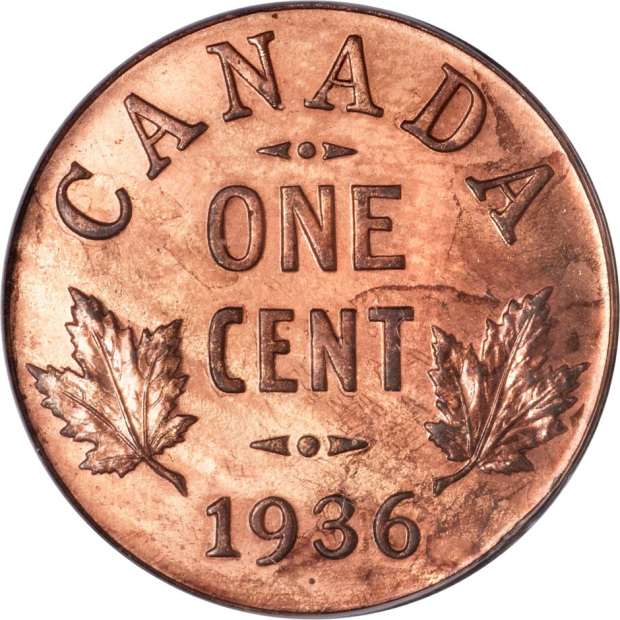
That was the 1936 dot penny and these dot coins are some of the most popular collectable Canadian Coins. The 1936 dot penny was rarest of them all and I believed there were four of these at the time but I hear today there is only 3 mint state examples known to exist. One of them sold at a 2010 coin auction for over $400,000!
Then in 2013 one sold at a US auction for $250.000, I guess I should have bought one when I was a kid and they were still under $10,000
The dot coins came about because of King Edward VIII’s sudden abdication in late 1936 which saw George VI ascend to the throne. That was a major problem for the Royal Canadian Mint (RCM) because they didn’t have any dies with the new king’s effigy on them to strike the 1937 coinage. Their solution was to produce a small number of 1936 coins with a tiny raised “dot” just below the date to denote that they were struck in 1937. Only 3 denominations were ever struck with the “dot”: 25-cents, 10-cents and 1-cent pieces.
The 1936 “dot” 10-cent piece is also extremely rare. One example sold at a 2010 coin auction for over $184,000 and in 2013 another for $250,000
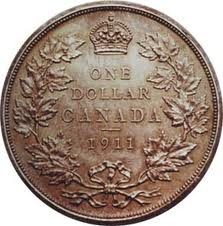
The 1911 Canadian Silver Dollar is the be all to end all of Canadian coins and perhaps the world. For years it held the record for the world’s most valuable coin and was listed in The Guinness Book of World Records during the 1960s and 1970s as the world's rarest coin . Only 3 examples were ever struck (2 in silver and 1 in bronze). The bronze example and 1 silver example are housed at the Canadian Currency Museum in Ottawa, which leaves only 1 example out there for collectors! At an auction in 2003, this coin fetched nearly 1 million dollars.
I loved the design of the Canadian 50 cent coin and it was rare to find one in circulation but I found several. The 1921 50 cent coin is another classic Canadian rarity. Charlton lists the original mintage of this coin at 206,398, but almost all of them were melted down because of low demand for 50 cent coins. As a result, only a handful of these coins exist and many believe that they came from specimen sets and business strikes that were sold to visitors at the mint in 1921. These coins in various grades can fetch anywhere from $40,000 to $250,000 at auction.
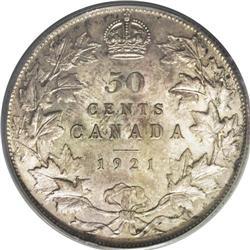
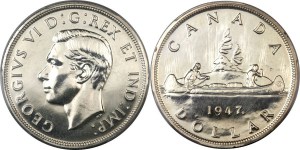
The silver dollars were another favorite I liked but I don't have any in great condition. The “King of Canadian Silver Dollars” is the 1948 Silver Dollar. Its listed mintage was 18,780 but only a few have survived. The story behind the low mintage of the 1948 silver dollar has to do with India’s independence in 1947. Prior to 1948, the obverse of Canadian coins featured the effigy of the reigning monarch with their name and royal title in a Latin inscription. Part of their royal title included the designation of “emperor of India.” So this needed to be removed from the dies to strike the 1948 coins. By the time the mint received the new dies they were only able to produce a small quantity. These coins can be found at auction and usually sell between $1,000 and $20,000, depending on the grade.
The 1947 Maple Leaf coins, the sample shown here with the small Maple Leaf after the '7' in the date were also popular collector coins
American Coins
I love American coins as well and truly one of the great rarities of world numismatics, is the American 1913 Liberty Nickel and 1804 Silver Dollars.
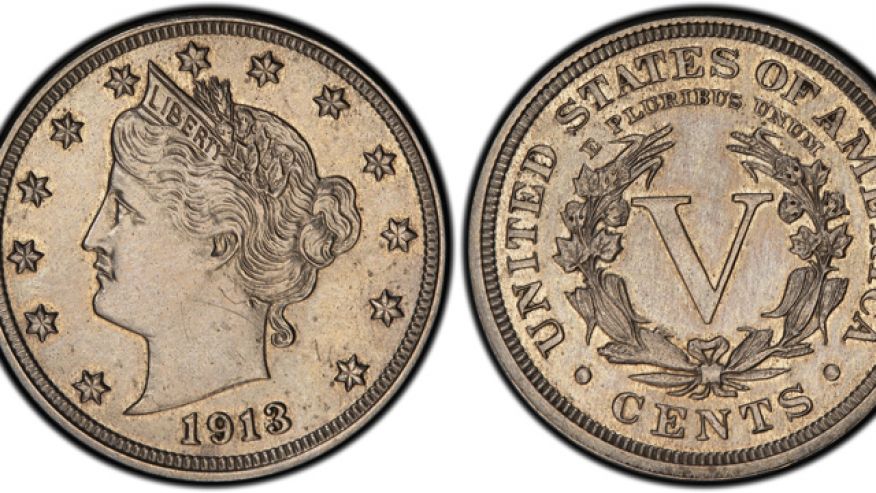
The 1913 Liberty Head Nickel is one of the most valuable coins in the world. Only 5 specimens are confirmed to exist. The finest-known 1913 Liberty Nickel is valued at a minimum of $5 million, the price for which it sold in May of 2007. The Liberty Head Nickel, designed by Charles E. Barber, was minted from 1883 to 1913.
In 2013 one sold at an auction for 3.1 million
What makes coin collecting intriguing is the storys of found riches and this is a beauty. Virginia Siblings to make millions on 1913 rare nickle
"The sad part is my mother had it for 30 years and she didn't know it," Cheryl Myers said. "Knowing our mother, she probably would have invested it for us. She always put her children first."
Known by collectors as "The King of American Coins,"is the 1804 dated US. Silver dollar, specially made on behalf of President Andrew Jackson. Although it's dated 1804, it was actually made in 1834 or 1835,.it was intended to be given as a diplomatic gift on behalf of President Andrew Jackson by State Department representatives on trade missions to the Middle East and Asia.
An 1804-dated U.S. silver dollar and still in mint condition, sold for $3,877,500 at Heritage Auctions in, August 2013 exceeding the pre-sale estimate of $3+ million.
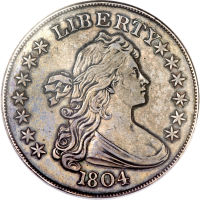
Mint records indicate a total of 19,570 silver dollars were struck in 1804; however, researchers believe that all those coins were actually dated either 1802 or 1803 because leftover coin-making dies from those years were likely used to produce the silver dollars struck in 1804. The Mint would not strike silver dollars for circulation again until 1836.
When Mint officials began preparing sets of coins in 1834 to be given by the State Department as diplomatic gifts, the Mint records indicated the last year for production of U.S. silver dollars was 1804 but they could not locate any with that date. A handful of the coins bearing the date were then specifically struck.
While many may think of old coins as being valuable what really matters is the rairity which I touched on with these coins above and the condition or the grade of the coin.
The 70-Point Grading Scale
When coins are graded, they are assigned a numeric value on the Sheldon Scale. TheSheldon Scale ranges from a grade of Poor (P-1) to Perfect Mint State (MS-70.) Grades are usually assigned at key points on this scale, with the most commonly used points being
(P-1) Poor -Barely identifiable; must have date and mintmark, otherwise pretty thrashed.
(FR-2) Fair -Worn almost smooth but lacking the damage Poor coins have.
(G-4) Good -Heavily worn such that inscriptions merge into the rims in places; details are mostly gone.
(VG-8) Very Good -Very worn, but all major design elements are clear, if faint. Little if any central detail.
(F-12) Fine -Very worn, but wear is even and overall design elements stand out boldly. Almost fully-separated rims.
(VF-20) Very Fine -Moderately worn, with some finer details remaining. All letters of LIBERTY, (if present,) should be readable. Full, clean rims.
(EF-40) Extremely Fine -Lightly worn; all devices are clear, major devices bold.
(AU-50) About Uncirculated -Slight traces of wear on high points; may have contact marks and little eye appeal.
(AU-58) Very Choice About Uncirculated -- Slightest hints of wear marks, no major contact marks, almost full luster, and positive eye appeal.
(MS-60) Mint State Basal -Strictly uncirculated but that's all; ugly coin with no luster, obvious contact marks, etc.
(MS-63) Mint State Acceptable -Uncirculated, but with contact marks and nicks, slightly impaired luster, overall basically appealing appearance.
Strike is average to weak.
(MS-65) Mint State Choice -Uncirculated with strong luster, very few contact marks, excellent eye appeal. Strike is above average.
(MS-68) Mint State Premium Quality -Uncirculated with perfect luster, no visible contact marks to the naked eye, exceptional eye appeal. Strike is sharp and attractive.
(MS-69) Mint State All-But-Perfect -Uncirculated with perfect luster, sharp, attractive strike, and very exceptional eye appeal. A perfect coin except for microscopic flaws (under 8x magnification) in planchet, strike, or contact marks.
(MS-70) Mint State Perfect -The perfect coin. There are no microscopic flaws visible to 8x, the strike is sharp, perfectly-centered, and on a flawless planchet. Bright, full, original luster and outstanding eye appeal.
